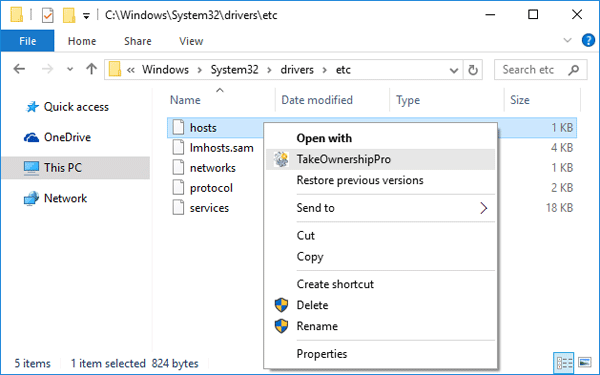Edit Hosts File Windows System32 Drivers Etc
I tried multiple ways to edit hosts file on Windows but failed.First the hosts file seemed to appear, when using PowerShell, but the whole etc directory disappeared when using any other tool. But because I don't know how to open as admin in PowerShell (I guess it's not possible), I just created a new etc directory with notepad run as an admin.But now the information provided in hosts isn't used by any program (browser or putty).As a Unix nerd, this is very frustrating to me. How can I edit it on Windows 10? I also wouldn't mind some GUI thing hidden somewhere deep in the Settings app providing the same functionality. First, note that you must invoke Powershell as Admin. You are correct there is no command like sudo/su, but you can right click powershell and run as Admin.Second windows ships with a%systemroot%system32driversetchosts file by default, but in some recent versions, a token of that path (drivers I believe) is hidden.Third, after modifying the file, be sure to reboot.Fourth, note that tools like NSLookup will always check DNS first, so when testing use Ping or another simmilar utility that echoes out the resolved IP, rather than using nslookup. I generally use the host file for redirecting traffic into infrastructure tunnels, and for mocking out test environments for servers where code is deployed that uses DNS names in conjunction with Active Directory (so we can't point to a mock dns server).

How To Edit Hosts File Windows 10
For instance, right now I'm testing a bunch of web apps on a new server, that will replace an existing box when its ready, and host file rules are what makes the production links point to test resources while testing commences. As for reboots, I've set up hosts file on 3 boxes in the last few months, and all required rebooting for me.–Mar 24 '17 at 13:52. As mentioned in other answers, the hosts file is stored at C:windowssystem32driversetchosts. However, in Windows Vista and above, you have to change permissions. Some of my web developer users want to manually change it every hour, so my process was:1. Open an elevated explorer.exe to that directory2. Copy the original hosts file3.
Rename the original hosts file to.old4. Rename the new file to 'hosts'5.
Edit permissions to explicitly allow the relevant user full access. Don't allow 'Everyone'.
I want to append a line to C:WindowsSystem32driversetchosts using VBScript. I tried to read this file first using this code: Set filestreamIN = CreateObject('Scripting.FileSystemObject').OpenTextFile('C:WindowsSystem32driversetchosts',2,true)file = Split(filestreamIN.ReadAll, vbCrLf)for i = LBound(file) to UBound(file)msgbox file(i)NextfilestreamIN.CloseSet filestreamIN = NothingBut I got an error in the second line: Bad file mode. I ran it using this command: cscript 'D:ProjectAXAAXADEPROJ-867add host.vbs'with cmd being run as an administrator. Any help would be great.
Hosts File Download
Open the file for appending, and simply output what you want. It will automatically be appended. Set oFSO = CreateObject('Scripting.FileSystemObject')Set oHosts = oFSO.GetFile('C:WindowsSystem32driversetchosts')WScript.Echo oHosts.attributesSet fileAPPEND = oFSO.OpenTextFile('C:WindowsSystem32driversetchosts', 8, true)fileAPPEND.Write('192.168.0.1 MyMachine')fileAPPEND.CloseSet fileAPPEND = NothingSet oHosts = NothingSet oFSO = NothingOf course that does not address a potential issue of appending data that is already in the file.If you want to read the file first, open it for reading, read the data, close it, then re-open it for appending and make your changes.
There is no need to open it for writing.If you want to edit the file, read it in, close it, reopen it for writing, and write out the edited data.